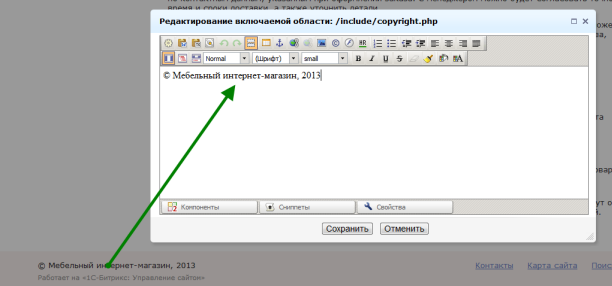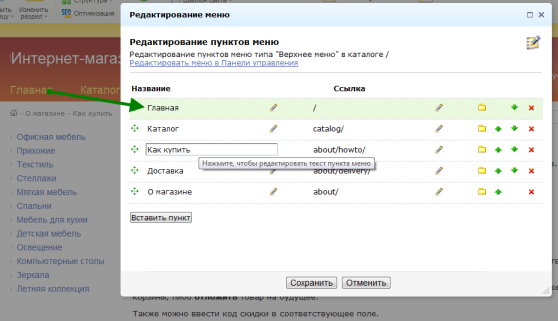The evolution of a web project - what not to forget to provide in the TK
Why waste time talking about quality?
You need to launch a web project in a short time, you choose a Bitrix platform or another framework, a contractor / integrator (or by using your own programmers), create a website, and at hour X visitors begin to use the web solution.
Why be distracted by the quality of integration issues if the web project is launched and the goal seems to be achieved? The site is available to customers, the project was implemented almost on time and met the budget, awards received ... :-)
Many simply do not think about the further development of the web project. And some categories of managers frankly pursue the goal of launching a web solution on time and they simply do not care about the quality and future fate of the website (the project can simply be transferred to another manager).
Fast or right?
Often, the web project continues to actively develop after launch, add new services, trying to keep on the "crest of a wave" and take into account the wishes of users.
If the web project was implemented “too quickly” or “not enough qualified specialists” you are expected by the following risks:
Suddenly it’s difficult, long and expensive to add website content.
The content of the web solution will vary at different speeds.
To change the phone in the footer, suddenly it turns out you need to involve a programmer. To add news, you can use the admin panel, but to add an image to the news again you need a programmer, because the image breaks the layout, etc.
It would be easier for you if the content of a web project was managed through the admin panel by employees without technical qualifications.
Expensive to tune up the functionality
Often, after launching a website, you need to tweak it a bit. For example, play the number of words in the announcement of the news, after which the ellipsis is put. Or the number of news in the news feed on the main page. You are looking for customization, but you are told that you need to involve a programmer.
You want to change the name of the menu item, swap them, add a description of the web page and keywords - but you were not given such an opportunity and again you need to rent developer resources.
')
It is dangerous and difficult to add new features and change existing ones.
When you want to add a new functionality, the developers say that it is very difficult and long to do, you have to rewrite a lot of things and then test them. And it will not be possible to test everything and it will be necessary to answer Questions of critical errors and data loss for several days.
Difficult to separate access to different sections of the web-based admin area
You want the news to be added by one employee, the content of the pages is added, the prices in the catalog are third, and only the web solution administrator has changed the passwords. It may be that you have only one level of access done - “all or nothing” - all administrators or guests.
Dangerous update platform
The Bitrix platform, on the basis of which a web solution is developed, is constantly evolving, new features are being added. You want to use them in your web project and keep the system up-to-date. But it may turn out that updating the web solution platform is dangerous because Because of a breach of integration standards, developers have made changes to the core of the system and the update may break the website.
The above and other risks arise from ignoring the requirements for the quality of integration of Berix solutions . The project will be launched quickly, but in this case its support and development can turn into a living hell.
How to "squeeze" the maximum benefit from Bitrix and integrators of web solutions?
First of all, you need to understand well for yourself, as a web project manager, the out-of-the-box platform features that benefit you, which allow you to:
- Add / change the content of a web project without the involvement of technical specialists
- “Tune up” the website functionality: edit the menu, list settings, etc.
- Constantly add new features to the web solution, develop the site quickly and confidently, not lagging behind competitors
- Organize effective work of employees with a web solution, dividing their rights, setting up various business processes if necessary (including moderation, etc.)
- Promptly add new features of the platform to your web solution through the update system, keeping up with modern web technologies and competitors.

Editing the page "above the site"

Editing page properties

Editing text "in the basement" of the site

Editing the phone

Menu management

Manage the number of news per page
These useful features provided by the platform, it is useful to reflect in the TOR on the development.
Look under the hood? Sometimes
At this point, you know the capabilities of the platform that are important from the point of view of support and development, put them in a ToR, carefully check their implementation and are more likely to get a web solution managed by you and your employees.
But early to calm down. From the outside, everything can look beautiful and manageable, site managers and visitors are satisfied, but with increasing load and / or data volume in a web project (the size of the catalog has increased, the number of visitors, orders, etc.), the system can start to slow down.
There is an opinion that the performance problem of a web solution can be effectively solved “head on” by increasing server capacity (move to a more “powerful” hosting, buy a new server, etc.). Unfortunately, this does not always work.
It is often much easier and cheaper to reduce this risk during the development phase of a web-based solution by including a clause in the ToR called “Load Testing”.
The Bitrix platform has many useful tools for auditing performance, from checking the "power" of server hardware to analyzing the speed of the project's web pages under load and monitoring the quality of programmers' work. The topic is large and interesting, but from the standpoint of effectively removing risk in the style of “poking a finger in the eye”, you just need to ... carry out load testing before putting the solution into operation.
The easiest way to conduct load testing using the tool "Settings / Performance / Performance Panel / Scalability":

To create a more realistic and integrated load scenario, it is advisable to use tools like Jmeter .
Many practical examples of organizing and conducting load testing of web projects can be found on our website .
Results
If a web project needs not only to be “quickly launched”, but also “cheap” to maintain and effectively develop, try to envisage in the ToR that the built-in capabilities of the Bitrix platform (including the Hermitage technology) be used to the maximum: -the solution was manageable without the involvement of technical specialists, expandable without the risk of “everything needs to be rewritten from scratch”, and the platform / core of the web project could be updated at any time to get new functionality. And so that the website “does not freeze” with an increase in the load and / or data volume - provide in the TOR the load testing on the approximate to the real volumes of test data.
Sincerely, Head of Integration and Implementation Quality Control
Alexander Serbul
Source: https://habr.com/ru/post/124886/
All Articles